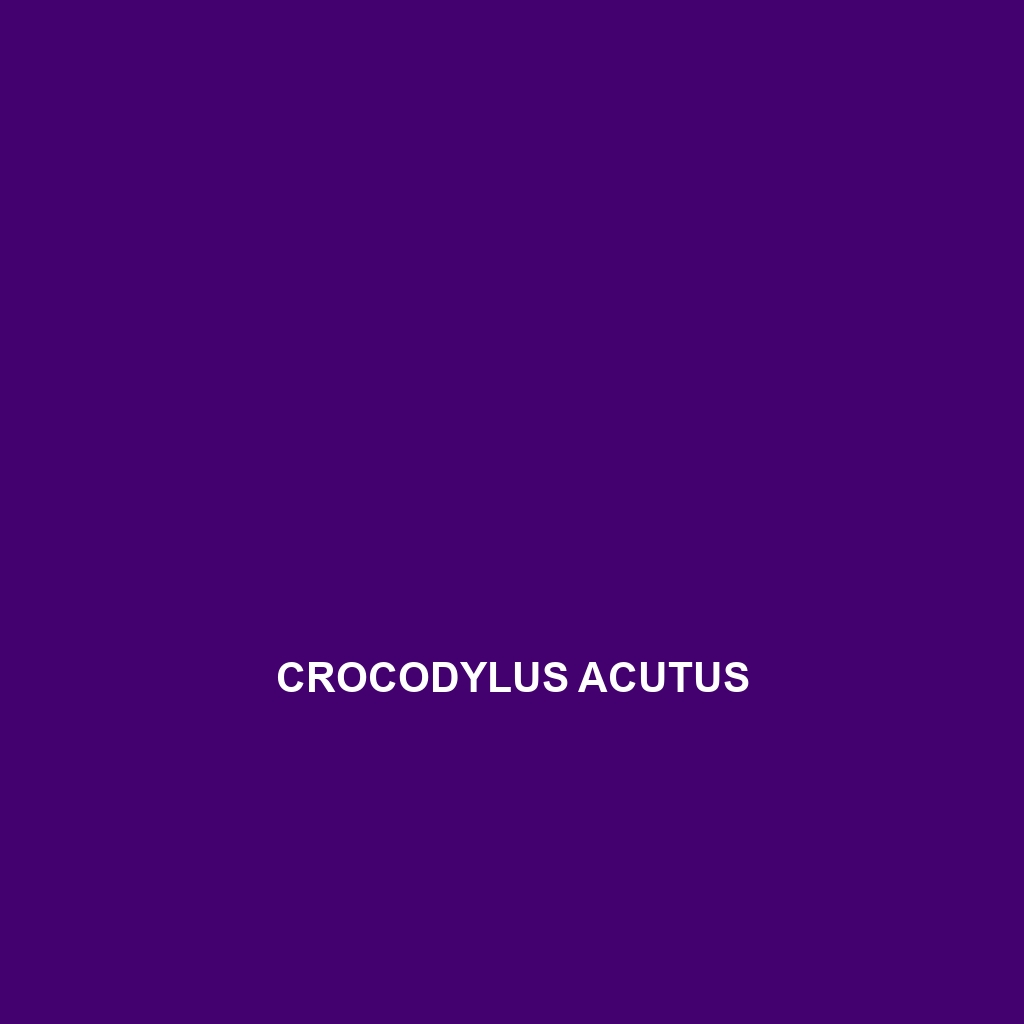Common Name: Crocodylus acutus
Scientific Name: Crocodylus acutus
Habitat:
The Crocodylus acutus, commonly known as the American crocodile, primarily inhabits coastal areas, brackish waters, and mangrove swamps. This species is predominantly found in regions throughout the southern United States, Central America, and the Caribbean, especially in countries like Florida, Mexico, Colombia, and Cuba. The American crocodile prefers warm, shallow waters that provide ample opportunities for basking and hunting.
Physical Characteristics:
Crocodylus acutus typically ranges in size from 10 to 13 feet (3 to 4 meters) in length, although some individuals may grow larger. This species is characterized by its long, narrow snout, which is distinctively shaped for catching fish. The coloration usually consists of a pale green or grayish hue, adorned with darker patterns for camouflage. Notable features include strong limbs, webbed feet, and agile tails that facilitate swimming in freshwater and saltwater environments.
Behavior:
The American crocodile exhibits both diurnal and nocturnal behaviors, being most active during the early morning and late afternoon. Known for being territorial, Crocodylus acutus can often be seen basking on riverbanks or sunning itself on platforms made of vegetation. When hunting, this species shows remarkable patience, utilizing a stealthy approach to ambush prey. Social interactions can be observed during the breeding season when males display aggressive behaviors to attract females.
Diet:
Crocodylus acutus is primarily carnivorous, subsisting on a diet that includes fish, small mammals, birds, and crustaceans. Their feeding habits demonstrate adaptability, as they often hunt in both saltwater and freshwater environments. Mating and nesting seasons influence their dietary patterns, as these crocodiles may target different food sources that align with seasonal availability.
Reproduction:
The breeding season for Crocodylus acutus typically occurs during the warmer months, from May to August. During this time, males engage in displays to attract females, which leads to courtship behaviors and the production of clutches ranging from 20 to 60 eggs. Nesting is usually done in sandy areas or along riverbanks, where the female carefully guards her nest until the eggs hatch, usually after 80 to 90 days. Offspring are independent from birth, with maternal care lasting only a short period.
Conservation Status:
According to the International Union for Conservation of Nature (IUCN), Crocodylus acutus is currently classified as a vulnerable species. Threats such as habitat loss, pollution, and hunting have contributed to their decline in various regions. Conservation efforts are being made to protect their habitats and promote sustainable interaction with local communities.
Interesting Facts:
One fascinating fact about the American crocodile is its ability to tolerate saltwater, thanks to specialized glands in its tongue that excrete excess salt. Additionally, Crocodylus acutus is known to construct nests using vegetation, which helps regulate temperature and moisture for the developing eggs.
Role in Ecosystem:
The role of Crocodylus acutus in its ecosystem is crucial as a top predator, helping to maintain healthy fish populations and balance aquatic ecosystems. By preying on various species, these crocodiles contribute to the regulation of prey populations, which in turn supports the biodiversity and health of their habitats. Their presence also signifies a robust ecosystem, making their conservation essential for environmental integrity.
